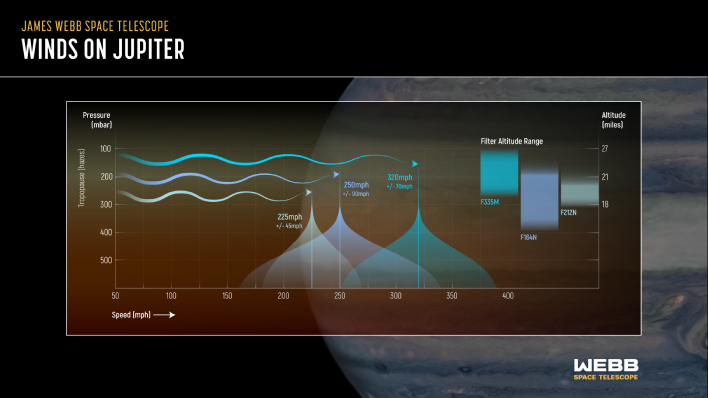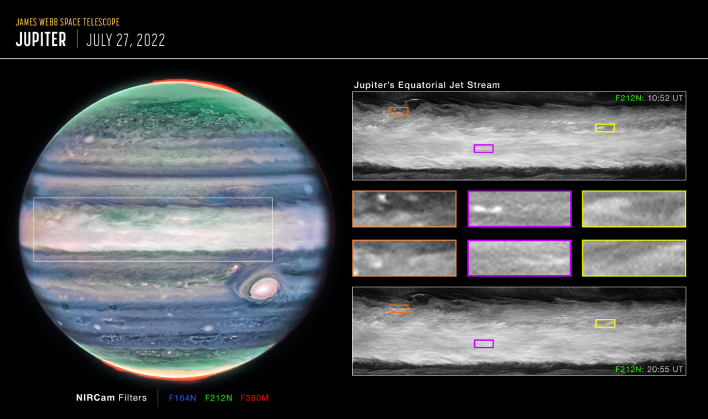NASA’s Webb Telescope Discovers An Intense High Speed Jet On Jupiter

Jupiter has some very well-known features, like its Great Red Spot which is large enough to engulf Earth. This mammoth planet, which spans 89,000 miles (143,000 kilometers) wide at its equator, is so large that all the other planets in the solar system could fit inside it. There are some features, however, that have remained a mystery. This is where NASA's James Webb Space Telescope is beginning to help astronomers and scientists reveal some of those hidden gems, like the newly found high-speed jet stream "speeding" across the planet's equator.
"This is something that totally surprised us," remarked Ricardo Huseo of the University of the Basque Country in Bilbao, Spain, and lead author of the paper describing the findings. "What we have always seen as blurred hazes in Jupiter's atmosphere now appear as crisp features that we can track along with the planet's fast rotation."
The team used data from Webb's NIRCam (Near-Infrared Camera) captured in July 2022. The program that provided the data, The Early Release Science program, was designed to capture images of the planet 10 hours apart, or one Jupiter day, in four different filters. According to NASA, each of those filters was uniquely able to detect changes in small features at different altitudes of Jupiter's atmosphere.
Imke de Pater from the University of California, Berkley, and part of The Early Release program, noted that even with various ground-based telescopes, spacecraft like Juno and Cassini, and even the Hubble Space Telescope, features such as the Jovian system's changing weather patterns, Jupiter's rings, satellites, and atmosphere have remained a bit of a mystery until Webb.
Webb's ability to peer farther into the near-infrared than ever before makes it capable of detecting higher-altitude layers of the atmosphere, around 15-30 miles (25-50 kilometers) above Jupiter's cloud tops. In the past, near-infrared imaging of the high-altitude hazes appeared blurry, with an enhanced brightness over the equatorial region. However, with Webb, finer details are now resolved within the once bright, hazy band.

To give some insight into just how fast this newly discovered jet stream travels, it moves at about 320mph (515kph), twice the sustained winds of a Category 5 hurricane here on Earth. It is located at about 25 miles (40 kilometers) above the clouds, in the gas giant's lower atmosphere, according to NASA.
The team was amazed that this jet stream could remain hidden from researchers after so many years of researching Jupiter. With so much more to learn about Jupiter, they are hopeful that many more hidden gems will be revealed over time with Webb.


